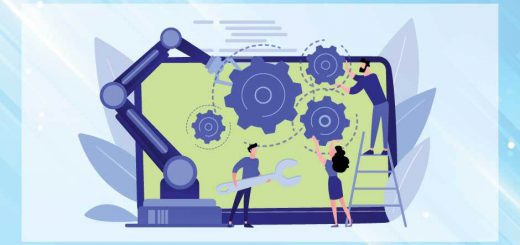Top Current Trends in Educational Technology
Keeping up with educational technology trends can sometimes feel like spinning plates. New apps and online services pop up every day, and educators can spend hours trying to keep up with them. But why does it matter?
Education technology is like a roller coaster on steroids. From the exhilarating heights of user-generated content to new approaches to teaching and learning, the evolution of educational technology is redefining what it means to teach. With all this innovative technology out there, you might be wondering what new trends are worth checking out this year!
- E-Learning
Technology has made the world a much smaller place, but we still need to travel far to get an education. For those with the pleasure of living at home, it can be difficult to leave the comforts of your house for the rigors of a classroom. And once you do, kids may not have time to complete their homework or study properly for standardized tests. That’s where e-learning comes in!
It is the hot new thing that’s taking the education world by storm. Instead of carrying books around and wasting time on buses, e-learning lets you teach in style using your phone, laptop, or computer. It has been a topic of discussion for many years, and due to the recent pandemic, this e-learning sector has received a much-needed push. It’s not only the kids that are having fun with e-learning anymore. These days, all educators are jumping on the bandwagon as well to join in on the fun!
- Video-Assisted Learning
There’s another trend in the air which is definitely worth looking at; it’s called video-assisted learning. It combines a little teacher training with a touch of directorial genius (or at least decent editing skills).
Teachers often use “video days” as a way to add interest to classes made up of material students aren’t interested in. Video-assisted learning breaks down sections that are hard to understand and demonstrate them with cool little videos which makes studying more fun.
These days, there are so many options in the distance learning technology market that it can be hard to make a choice. But video-assisted learning is no longer the laughing stock of some educators these days. In fact, brick-and-mortar schools have come to rely on this technology to bridge the gap between students who can’t pursue their college studies and those who have not yet had the time to get out into the world.
- Growing Big Data
Students– notoriously hard to engage – were, if anything, even more, engaged during the recent epidemic, possibly because they were cooped up in homes, having nothing else to do! This gave schools huge amounts of data on their pupils’ engagement levels, and there was a distinct possibility that this could lead to major advances in the field of education.
This data will be an asset for educators. Using this data, we can evaluate different aspects of the education system, including exam performance and methods of teaching, so teachers have the information they need to improve their students’ learning. Moreover, new interactive software could help students understand difficult topics and teach them effectively.
- Artificial Intelligence
AI programmers are working around the clock to develop a team of highly customizable, inexpensive AI tutors. These educational robots can help students learn history, language arts, science, and math by allowing them to independently explore topics at their own pace.
The future of education is here, and we think most of it will be driven by AI! It can help teachers by grading multiple-choice questions and filling in the blanks without an educator’s involvement. Traditional methods can be time-consuming and expensive therefore AI ensures that it solves those problems for them too. By giving the students personalized tutoring to those who need it, teaching can be tailored to their learning path, giving them a better educational experience overall!
Final Thoughts
Education technology has come a long way since its origins in the 1970s. Technology has empowered both students and teachers to improve education, as well as create new ways for everyone to learn by collaborating, playing, and competing together.
With the recent advancements in technological advancement, we have seen a rise in the use of innovative educational software. Used by educators to enhance the learning process and provide new ways to engage with students, it’s become a useful tool for modern-day teachers. We hope this blog post has helped you in some way and made you up-to-date with the technical prowess of the current educational industry!



